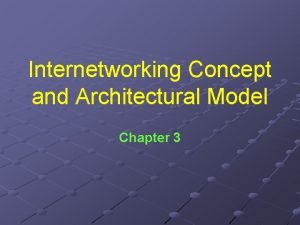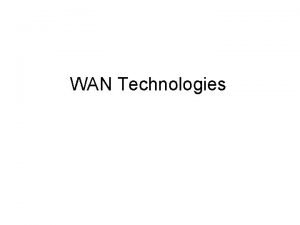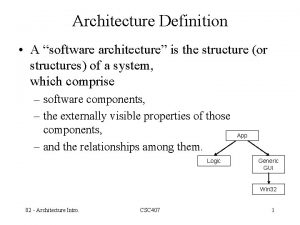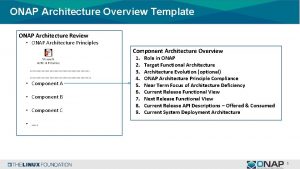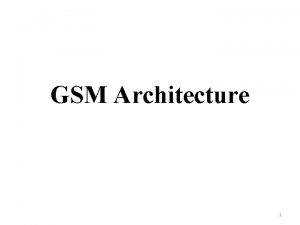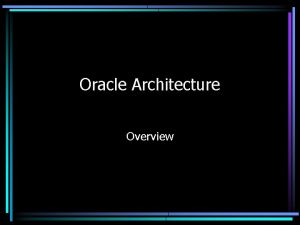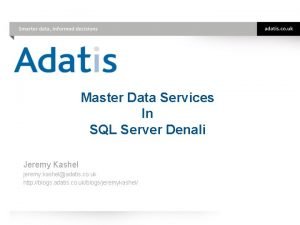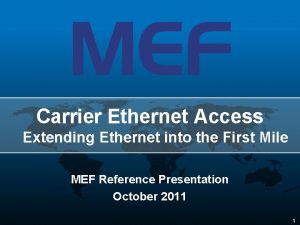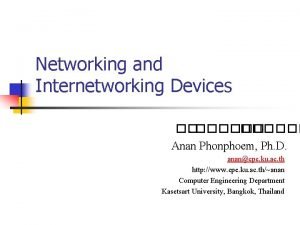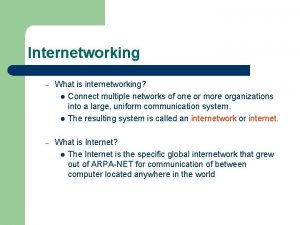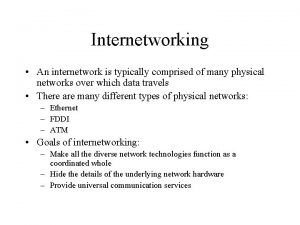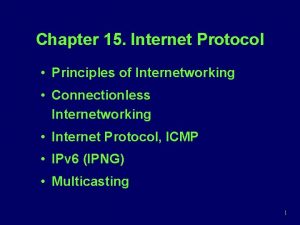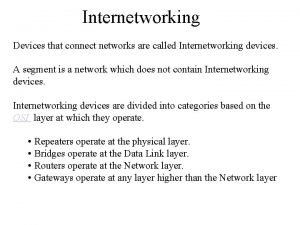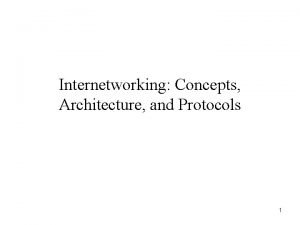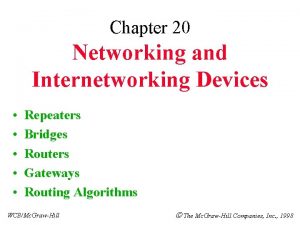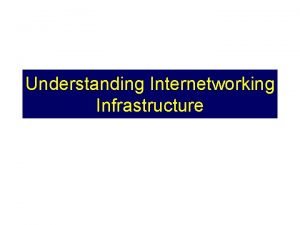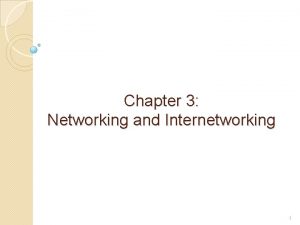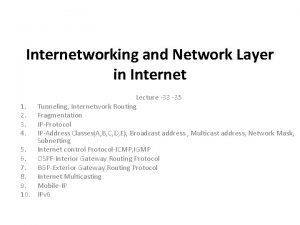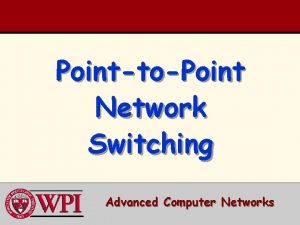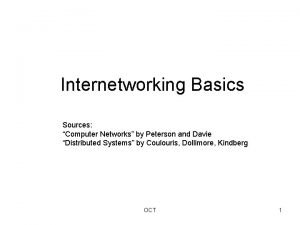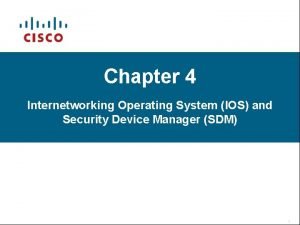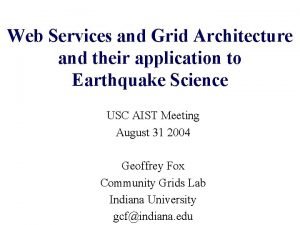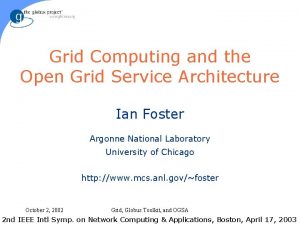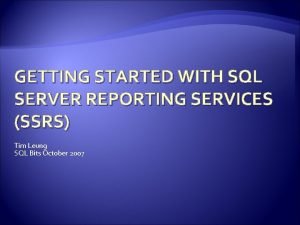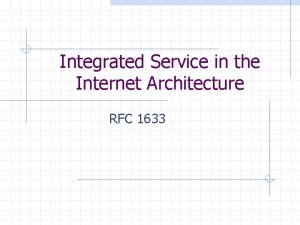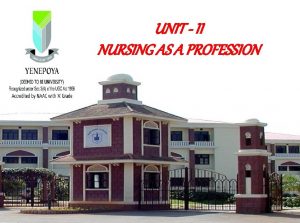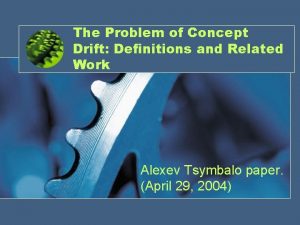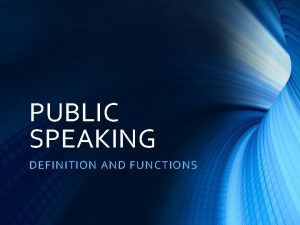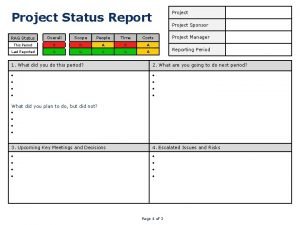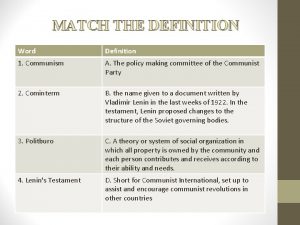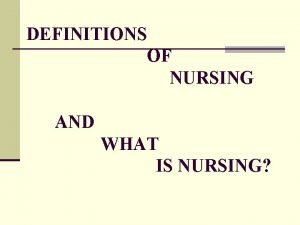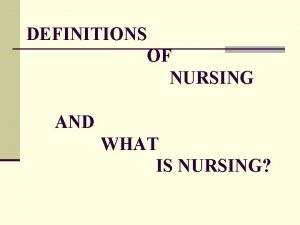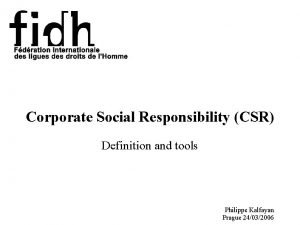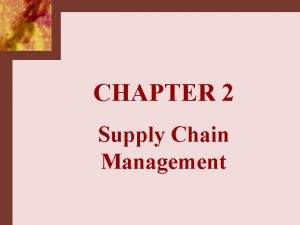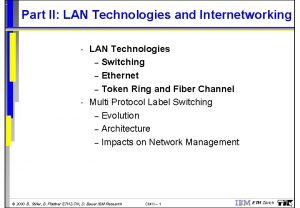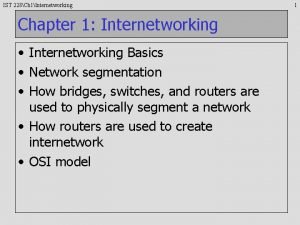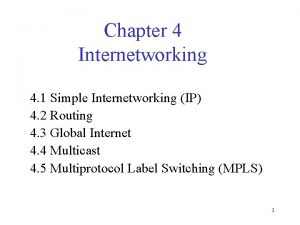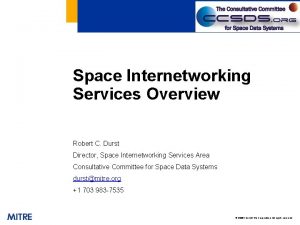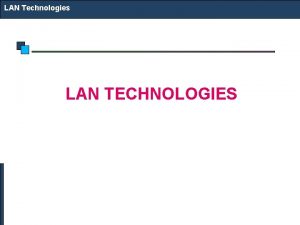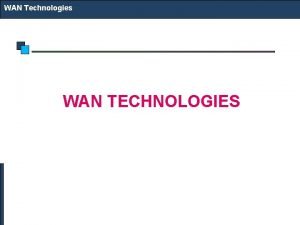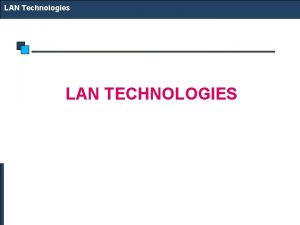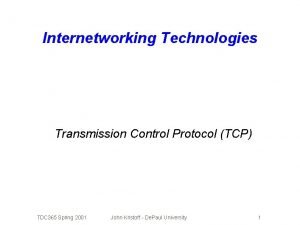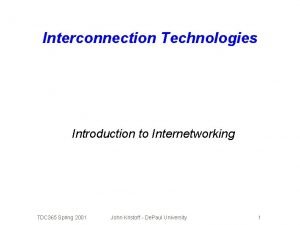Internetworking Technologies Services I Overview Definitions Internetworking Architecture













































































- Slides: 77

Internetworking Technologies & Services (I) • Overview – – Definitions Internetworking Architecture Models Internetworking Standards Network Terminology Gaurav Projects 1

Definitions • Proprietary Systems – Privately owned and operated – Held under patented, trademark, or copyright by a private person or company • De facto Standards – Existing or being such in actual fact though not by legal establishment – Official recognition • Standards – Something established for use as a rule or basis of comparison in measuring or judging capacity, quantity, content, extent, value, quality, etc. Gaurav Projects 2

Definitions • Rules and conventions for the exchange of information – Open Systems • Who makes the rules and conventions? – Many local, regional, and international organizations – ISO, ITU, IEEE, ANSI, ECMA Gaurav Projects 3

Internetworking Architecture Models • OSI Model • 3 -Layer Model • TCP/IP Model Gaurav Projects 4

OSI Model • International Organization for Standardization (ISO) – Open System Interconnection (OSI) Model, provides a framework Application Presentation Technology independent Session Transport Boundary Network Data Link Technology dependent Physical Gaurav Projects 5

OSI Model • Data transfer Data Application Presentation Session Transport Network Data Link Physical Gaurav Projects 6

3 -Layer Model • 7 -layer OSI to 3 -layer mapping – System integrators approach Application Presentation Network Services Session Transport Network Protocols Network Data Link Physical Gaurav Projects Network Infrastructure 7

TCP/IP Model • TCP/IP Protocol Suite, ARPANET (DARPA) Application Transport (TCP, UDP) Internet (IP) Network Access Physical Gaurav Projects 8

OSI to TCP/IP Models • 7 -layer OSI and TCP/IP Protocol Architectures Application Presentation Application Session Transport Network Data Link Physical Gaurav Projects Transport (TCP, UDP) Internet (IP) Network Access Physical 9

Internetworking Standards • Proprietary Systems • De facto Standards • Standards Based Solutions Gaurav Projects 10

Internetworking Standards • Proprietary Systems – – – Hewlett-Packard DARPA TCP/IP Sun Network Services Novell Net. Ware IBM/SNA DEC/DECnet Phase IV 3 Com Xerox/XNS IBM/SNA Apple/Apple. Talk Banyan VINES Gaurav Projects 11

Internetworking Standards • De facto Standards – – – TCP/IP Ethernet V 1 & V 2 X-Windows Unix WIN 95 NT Gaurav Projects 12

Internetworking Standards • Standards Based Solutions – – – IEEE: 802. 3/CSMA/CD, 802. 5/Token Ring, 802. 2/LLC, etc. ANSI: FDDI, etc. CCITT: V. 35, X. 25, Frame Relay, etc. ISO-ITU: 8802/3, 8802/5, 9314, V. 35, etc. EIA: RS-232, RS-449, etc. ATM Forum Gaurav Projects 13

Network Terminology • LAN to LAN Connectivity – Building Networks, Small Enterprise, Campus Networks, Corporate Complex, etc. • LAN to WAN Connectivity – Internet, Enterprise Networks, etc. • WAN to WAN Connectivity – ISPs, Internet NAPs, Gigapops, etc. Gaurav Projects 14

Network Terminology • Four types of equipment – – Modems, Repeaters Bridges, switches Routers Gateways - layer 1 - layer 2 - layer 3 - layers 1 -7 • All use functionality of lower layers Gaurav Projects

Internetworking Technologies & Services (I) • Internetworking Protocols – Definitions – Common Network Protocols Gaurav Projects 16

Network Protocols • Definition: Network Protocols are the formal description of a set of rules and conventions that govern how devices on the network layer (layer 3 of the OSI model) exchange information. • Protocols provide the link by which systems connected to a network or internetwork may talk to each other • For two end systems to talk to each other, they must effectively “speak the same language” Gaurav Projects 17

Network Protocols • Key Concerns Addressed by Protocols – Syntax: data format, voltage levels and bit encoding – Semantics: control information for controlling network functions – Timing: synchronization and flow control • Above concerns are the minimum to insure reliable communications between computers Gaurav Projects 18

Protocol Functions • Segmentation/Reassembly – data is segmented into protocol data units (PDUs) – buffer size of intermediate nodes – error control is more efficient with smaller blocks of data – communication links may accept blocks of data of a certain size • Encapsulation – PDUs contain control information as well as the data handed to it – attaching of control information to the head of a PDU is known as encapsulation Gaurav Projects 19

Protocol Functions • Connection Control – data transfer can be either connectionless or connectionoriented – in connectionless transfers each PDU is independent of all others sent – in connection-oriented transfers a logical connection is established prior to the data transfer, then each PDU sent has a sequence number – sequencing supports ordered delivery, flow control, and error control – connection control function of a protocol manages the establishment and disconnection of a link Gaurav Projects 20

Protocol Functions • Ordered Delivery – PDUs may travel different routes, and may arrive out of order with respect to the transmitting order – a protocol must be able to reorder the PDUs in the correct order • Flow Control – a receiver may not be able to process the PDUs as fast as the transmitter can send them – a receiver requires some way of limiting the rate of the transmitter – flow control functions ensure that data sent does not overwhelm the receiver Gaurav Projects 21

Protocol Functions • Error Control – PDUs can be lost or damaged – methods for detecting and correcting errors is required – retransmission upon failure of acknowledgement of receipt is a common method for handling lost PDUs – cyclic redundancy checks are often used to detect damaged PDUs • Addressing – a protocol must have a means for identifying a particular user using a particular application on a particular host residing on some network – addressing is a means for protocols to identify these needs Gaurav Projects 22

Protocol Functions • Multiplexing – multiplexing is used to improve the efficiency and usage of the transmission medium – functions exist to support frequency or time division multiplexing as well as multiplexing the connections • Transmission Services – other types of services to the upper layers exist – three common services are: priority, grade of service, and security Gaurav Projects 23

Common Network Protocols • • • TCP/IP Apple. Talk Novell IPX XNS DECnet Banyan Vines Gaurav Projects 24

TCP/IP • • • De facto Standard. Developed in 1970’s Widely used by hardware and software vendors Well suited for LAN’s and WAN’s Birth of the Internet: National and International Connectivity • TCP/IP Network Architecture • TCP/IP Services and Applications Gaurav Projects 25

TCP/IP • Set of protocols developed by the U. S. Defense Department's Advanced Research Projects Agency (DARPA) during the early 1970 s. Its intent was to develop ways to connect different kinds of networks and computers. • Common name for the suite of protocols developed by the U. S. Do. D in the 1970 s to support the construction of worldwide internetworks. TCP and IP are the two bestknown protocols in the suite. Gaurav Projects 26

TCP/IP • DOD designed TCP/IP to be robust and automatically recover from any node or phone line failure. This design allows the construction of very large networks with less central management. However, because of the automatic recovery, network problems can go undiagnosed and uncorrected for long periods of time. Gaurav Projects 27

TCP/IP • The Internet Protocol (IP) is a packet-based protocol used to exchange data over computer networks. IP handles addressing, fragmentation, reassembly, and protocol multiplexing. • It is the foundation on which all other IP protocols, collectively referred to as the IP Protocol suite, are built (TCP, UDP, ICMP, ARP, etc. ). • IP is a network-layer protocol that contains addressing Gaurav Projects and control information that allows 28

TCP/IP • IP is responsible for moving packet of data from node to node. IP forwards each packet based on a four byte destination address (the IP number). The Internet authorities assign ranges of numbers to different organizations. The organizations assign groups of their numbers to departments. IP operates on gateway machines that move data from department to organization to region and then around the world. Gaurav Projects 29

TCP/IP • The Transmission Control Protocol (TCP) is built upon the IP layer. TCP is a connection-oriented protocol that specifies the format of data and acknowledgments used in the transfer of data. TCP also specifies the procedures that the computers use to ensure that the data arrives correctly. • TCP allows multiple applications on a system to communicate concurrently because it handles all multiplexing of the incoming traffic among the application programs. Gaurav Projects 30

TCP/IP • TCP is responsible for verifying the correct delivery of data from client to server. Data can be lost in the intermediate network. TCP adds support to detect errors or lost data and to trigger retransmission until the data is correctly and completely received. • Sockets is a name given to the package of subroutines that provide access to TCP/IP on most systems. Gaurav Projects 31

TCP/IP • The User Datagram Protocol (UDP) is used when reliability mechanisms in TCP are not needed. UDP is a connection-less-oriented protocol. Gaurav Projects 32

TCP/IP Network Architecture Gaurav Projects 33

IP Network Addresses • IP address is 32 bits in length, divided into either two or three parts: – First part designates the host address – Second part (if present) designates the subnet address – Third part designates the host address Gaurav Projects 34

IP Network Addresses • IP addressing supports five different network classes: – Class A: Mainly used with a few very large networks. Provide only 7 bits for the network address field. – Class B: 14 bits for the network address field, 16 bits for the host address field. Offers a good compromise between network and host address space – Class C: Allocate 22 bits for the network address field, provide only 8 bits for the host field. The number of host may be a limiting factor – Class D: Reserved for multicast groups, the 4 highest-order bits are set to 1, 1, 1, and 0. – Class E: Reserved for future use, the four highest-order bits are all set to 1. Gaurav Projects 35

IP Network Addresses Gaurav Projects 36

TCP/IP Applications & Services • FTP ( File Transfer Protocol): Move files between computer systems. • Telnet ( Terminal Emulation Protocol): Allows virtual terminal emulation. • SMTP ( Simple Mail Transfer Protocol): Provides an electronics mail transport mechanism. • SNMP ( Simple Network Management Protocol): It is a network management used for reporting anomalous network conditions and setting network threshold values, SNMP Version 1 & 2. 37 Gaurav Projects

TCP/IP Applications & Services • HTTP (Hypertext Transfer Protocol): Enables services to terminals running WWW clients and browsers. • NFS (Network File System): Allows transparent access to network resources. It includes three services: – NFS (Network File System) – XDR (Eternal Data Representation) – RPC (Remote Procedure Call) Gaurav Projects 38

Apple. Talk • Proprietary Standard Developed in 1985 and 1989 (Phase I & II) • Initially suited for local workgroups • Apple published standard to encourage third party development of applications and services. • Principle Contribution: Dynamic node assignment, Name binding, Logical groupings of networks • Implemented on major OSs (Mac. OS, Microsoft Windows, Unix) Gaurav Projects 39

Apple. Talk • Apple. Talk is a LAN system designed and developed by Apple Computer, Inc. It can run over Ethernet, Token Ring, and Fiber Data Distributed Interface (FDDI) networks, and over Apple's proprietary twisted-pair media access system (Local. Talk). • Apple. Talk specifies a protocol stack comprising several protocols that direct the flow of traffic over the network. Apple Computer uses the name Apple. Talk to refer to the Apple network protocol architecture. Gaurav Projects 40

Apple. Talk • Apple Computer refers to the actual transmission media used in an Apple. Talk network as: – – Local. Talk (Apple. Talk over telephone wire) Ether. Talk (Apple. Talk over Ethernet) Token. Talk (Apple. Talk over Token Ring) FDDITalk (Apple. Talk over FDDI) Gaurav Projects 41

Apple. Talk Phase 1 • Phase 1: the earlier version, supports a single physical network that can have only one network number and be in one zone. Apple Talk Phase 1 was installed on over 1. 5 million Macintosh computers in the first five years of the products life, however, Apple found that some large corporations were exceeding the built-in limits of Apple Talk Phase 1, so they enhanced the protocol. Gaurav Projects 42

Apple. Talk Phase 2 • Phase 2: the more recent version, supports multiple logical networks on a single physical network and allows networks to be in more than one zone. The enhanced protocol, known as Apple Talk Phase 2, improved the routing capabilities of Apple Talk and allowed it to run successfully in larger networks. Gaurav Projects 43

Apple. Talk Protocols • Layers 6 & 7 – AFP - Apple. Share File Server – Post. Script - Print. Share • Layers 5 – – ADSP - Apple. Talk Data Stream Protocol ZIP - Zone Information Protocol ASP - Apple. Talk Session Protocol PAP - Printer Access Protocol Gaurav Projects 44

Apple. Talk Protocols • Layers 4 – – – RTMP - Routing Table Maintenance Protocol AURP - Apple. Talk Update-Base Routing Protocol AEP - Apple. Talk Echo Protocol ATP - Apple. Talk Transaction Protocol NBP - Name Binding Protocol • Layers 3 – DDP - Datagram Delivery Protocol – AARP - Apple. Talk Address Resolution Protocol Gaurav Projects 45

Apple. Talk Protocols • Layer 2 – – ELAP - Ether. Talk Link Access Protocol LLAP - Local. Talk Link Access Protocol TLAP - Token. Talk Link Access Protocol FLAP - FDDITalk Link Access Protocol • Layer 1 – – Local. Talk Ether. Talk Token. Talk FDDITalk Gaurav Projects 46

Apple. Talk Network Architecture Gaurav Projects 47

Apple. Talk Protocol Functions • DDP – Connectionless – Segmentation of upper layer PDU’s – Four field header: [Address header: Hop count: Data: Checksum] • AARP – Translates network address to physical addresses – Dynamic node assignment: Broadcasts random node selection, Conflict - try again, Minimal user intervention Gaurav Projects 48

Apple. Talk Protocol Functions • RTMP – Updates and maintains routing tables in routers – Five fields: [Network Number: Distance in hops: Router port to destination: ID of next router to destination: Network status] – Updated by broadcast every 10 seconds • ATP – Single Direction communications – Destination Reply Packet – Handles: Lost Packets, Delayed packets, Destination down Gaurav Projects 49

Apple. Talk Protocol Functions • AEP – Tests reachability of remote node – Similar to Ping • NBP – Resolves addresses – Distributed database – Supports zones Gaurav Projects 50

Apple. Talk Protocol Functions • ZIP – Zone Information Tables (ZIT) – Similar to routing tables • ADSP – Socket-to-socket connection control – Flow Control – Ordered Delivery Gaurav Projects 51

Novell Net. Ware Protocols • • • Introduced for IBM computers Developed from XNS Introduced in 1980’s Dominant LAN architecture - 65% market Runs on most major OS: Microsoft Windows, Mac. OS, UNIX Gaurav Projects 52

Novell IPX • Novell IPX (Internetwork Packet Exchange): Net. Ware’s network layer protocol used for transferring data from servers to workstations. • IPX is derived from the Xerox Network Systems (XNS) Internet Datagram Protocol (IDP). Gaurav Projects 53

Differences Between IPX & XNS • IPX and XNS do not always use the same Ethernet encapsulation format. • IPX uses Novell's proprietary Service Advertisement Protocol (SAP) to advertise special network services. File servers and print servers are examples of services that are typically advertised. • IPX uses delay, measured in ticks, while XNS uses hop count as the primary metric in determining the best path to a destination. Gaurav Projects 54

IPX Packet Format Gaurav Projects 55

Novell Net. Ware • Specifies upper five layers of OSI • Independent of physical media. Drivers for: Ethernet, Token Ring, FDDI, ARCnet, PPP, etc. Gaurav Projects 56

Novell Network Architecture Gaurav Projects 57

IPX Packet • • Checksum Length Transport Control Packet Type Destination Network Destination Host Destination Port Source Network, Host, Port Gaurav Projects 58

IPX Packet Gaurav Projects 59

Novell Net. Ware Protocols • IPX – – IPX (Internet Packet Exchange) derived form XNS Network and Transport Layers (Layers 3 & 4) Interface Connectionless routing protocol Routes Datagrams through intermediate networks • SAP – SAP (Service Advertising Protocol) – Servers learn about available services • RIP – RIP (Routing Information Protocol) – Same Protocol used in TCP/IP Gaurav Projects 60

Novell Net. Ware Protocols • SPX – SPX (Sequenced Package Exchange) derived from XNS Sequenced Packet Protocol (SPP) – Transport Layer (Layer 4) Interface – Connection oriented – Verifies integrity of data • Net. BIOS – Net. BIOS (Network Basic Input Output System) – Session and Presentation Layers (Layers 5 & 6) – Interface for IBM and Microsoft Gaurav Projects 61

XNS (Xerox Network System) • Protocol suite originally designed by Xerox Corporation in late 1970’s. Many PC networking companies, such as 3 Com, Banyan, Novell, and Ungermann-Bass Networks used or currently use a variation of XNS as their primary transport protocol. • XNS was designed to be used across a variety of communication media, processors and office applications. • UB, (now a part of Tandem Computers) adopted XNS Projects in developing its Net/One XNS routing Gaurav 62

XNS Network Architecture Gaurav Projects 63

IDP Packet Format • Checksum: A 16 -bit field that helps gauge the integrity of the packet after it traverses the internetwork. • Length: A 16 -bit field that carries the complete length (including checksum) of the current datagram. Gaurav Projects 64

IDP Packet Format • Transport control: An 8 -bit field that contains hop count and maximum packet lifetime (MPL) subfields. The hop count subfield is initialized to zero by the source and incremented by one as the datagram passes through a router. When the hop count field reaches 16, the datagram is discarded on the assumption that a routing loop is occurring. The MPL subfield provides the maximum amount of time, in seconds, that a packet can remain on the internetwork. Gaurav Projects 65

IDP Packet Format • Packet type: An 8 -bit field that specifies the format of the data field. • Destination network number: A 32 -bit field that uniquely identifies the destination network in an internetwork. • Destination host number: A 48 -bit field that is uniquely identifies the destination host. • Destination socket number: A 16 -bit field that uniquely identifies a socket (process) within the destination host. Gaurav Projects 66

IDP Packet Format • Source network number: A 32 -bit field that uniquely identifies the source network in an internetwork. • Source host number: A 48 -bit field that is uniquely identifies the source host. • Source socket number: A 16 -bit field that uniquely identifies a socket (process) within the source host. Gaurav Projects 67

IDP Packet Format Gaurav Projects 68

DECnet • Digital Equipment Corporation (Digital) developed the DECnet protocol family to provide a well-thought-out way for its computers to communicate with one another. The first version of DECnet, released in 1975, allowed two directly attached PDP-11 minicomputers to communicate. Gaurav Projects 69

DECnet • In more recent years, Digital has included support for nonproprietary protocols, but DECnet remains the most important of Digital's network product offerings. DECnet is currently in its fifth major product release (sometimes called Phase V and referred to as DECnet/OSI in Digital literature). Gaurav Projects 70

DECnet • DECnet Phase V is a superset of the OSI protocol suite and supports all OSI protocols as well as several other proprietary and standard protocols that were supported in previous versions of DECnet. As with past changes to the protocol, DECnet Phase V is compatible with the previous releases (i. e. Phase IV). • Digital Equipment Corporation designed the DECnet stack of protocols in the 1970 s as part of its Digital Network Architecture (DNA). Gaurav Projects 71

DECnet • DNA supports DECnet routing over Ethernet, Token Ring, FDDI, HDLC, Point-to-Point Protocol (PPP), Frame Relay, Switched Multimegabit Data Service (SMDS), X. 25, and IEEE 802. 2. • DECnet supports both connectionless and connection-oriented network layers implemented by Open System Interconnection (OSI) protocols. Gaurav Projects 72

DECnet Network Architecture Gaurav Projects 73

DECnet • Phase V is compatible with the previous release, Phase IV was similar to OSI routing, but Phase V implements full OSI routing including support for End System-to. Intermediate System (ES-IS) and Intermediate System-to-Intermediate System (IS-IS) connections. • An End System (ES) is a nonrouting network node; an Intermediate System (IS) refers to a router. ESIS support allows ESs and ISs to discover each other. IS-IS provides routing Gaurav Projects 74 between ISs only.

DECnet • DECnet Phase IV Prime supports inherent MAC addresses, which allows DECnet nodes to coexist with systems running other protocols that have MAC address restrictions. Gaurav Projects 75

Banyan VINES • The Banyan Virtual Network System (VINES) protocol is a networking system for personal computers. • This proprietary protocol was developed by Banyan Systems, Inc. , and is derived from the Xerox Network System (XNS) protocol. Gaurav Projects 76

Banyan VINES Network Architecture Gaurav Projects 77
 Internetworking concepts and architectural model
Internetworking concepts and architectural model Wan technologies overview
Wan technologies overview Wan technologies overview
Wan technologies overview What does software architecture means?
What does software architecture means? Architecture business cycle
Architecture business cycle Onap architecture overview
Onap architecture overview Stylistic overview
Stylistic overview Hlr and vlr in gsm
Hlr and vlr in gsm Overview of grid architecture
Overview of grid architecture Overview of oracle architecture
Overview of oracle architecture Master data services overview
Master data services overview Sql server mds
Sql server mds Web based client server in e commerce
Web based client server in e commerce E commerce architecture and technologies in web technology
E commerce architecture and technologies in web technology Microwave technologies for carrier ethernet services
Microwave technologies for carrier ethernet services Dell flex on demand
Dell flex on demand Decision tree
Decision tree What is internetworking
What is internetworking Advantages of internetworking
Advantages of internetworking Internet singkatan dari…
Internet singkatan dari… Principles of internetworking
Principles of internetworking What is internetworking devices
What is internetworking devices Internetworking concepts
Internetworking concepts Networking and internetworking devices
Networking and internetworking devices Internetworking business model
Internetworking business model Networking and internetworking
Networking and internetworking Internetworking in network layer
Internetworking in network layer Cell switching in computer networks
Cell switching in computer networks Internetworking basics
Internetworking basics Internetworking operating system
Internetworking operating system Call and return architecture in software architecture
Call and return architecture in software architecture Product architecture design
Product architecture design Integral architecture example
Integral architecture example Bus design in computer architecture
Bus design in computer architecture Layered architecture for web services and grids
Layered architecture for web services and grids Open grid service infrastructure
Open grid service infrastructure Iis internet information services
Iis internet information services Rfc 1633
Rfc 1633 Integrated services vs differentiated services
Integrated services vs differentiated services Wake county human services community services center
Wake county human services community services center Definiton of nursing
Definiton of nursing What is verbal irony
What is verbal irony The problem of concept drift: definitions and related work
The problem of concept drift: definitions and related work Carburizing flame definition
Carburizing flame definition A quick primer
A quick primer Forearm rom
Forearm rom Definition
Definition Meaning of education psychology
Meaning of education psychology Definition of rag status
Definition of rag status Defined poverty
Defined poverty Nonverbal communication
Nonverbal communication What is microteaching
What is microteaching Material properties and definitions
Material properties and definitions Collectivisation definition
Collectivisation definition Peter delisle leadership
Peter delisle leadership Human rights meaning
Human rights meaning Elements of plot
Elements of plot Elements of a plot diagram
Elements of a plot diagram Vocabulary words for hatchet
Vocabulary words for hatchet Picture of radius of a circle
Picture of radius of a circle Gothic fiction literary definition
Gothic fiction literary definition Types of news values
Types of news values Basic nursing definition
Basic nursing definition Nursing definition by nightingale
Nursing definition by nightingale Expand paragraph
Expand paragraph What is csr definition
What is csr definition Compare contrast definition
Compare contrast definition Comparative literature definition
Comparative literature definition Cscmp logistics definition
Cscmp logistics definition Basic chemistry definitions
Basic chemistry definitions Vocab workshop level f unit 10
Vocab workshop level f unit 10 Mach the word
Mach the word Adhd treatment goals
Adhd treatment goals Basic accounting equation definition
Basic accounting equation definition A point has:
A point has: Use the words below to describe
Use the words below to describe With definitions
With definitions Probability simple definition
Probability simple definition
